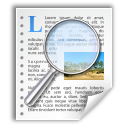Free readability tools to check for Reading Levels, Reading Assessment, and Reading Grade Levels.
[ HOME ] Check Your Readability: Check Text Readability NOW  Free Readability Calculators Learn about Readability Formulas: Dale-Chall Formula Flesch Reading Formula The Fry Graph SPACHE Formula [ View All ] Readability Help: [ View All Articles] Writing Tips: [ View All Articles] English Writing Products: StyleWriter software Site Map About Us Contact Us Write for Us |
History and Development of Readability Formulas We can trace the origin of readability formulas during the late 19th Century in the United States. The schools in the US did not routinely grade students until 1847 when the first graded school opened in Boston with a series of books prepared for each grade. Junior high school science teachers wanted to teach scientific facts and methods in plain English, rather than teaching complicated science vocabulary. As a result, teachers, librarians, and scholars developed primitive readability formulas to determine what seemed readable to their students.
No one had ever entertained the thought of grading adults. The US Military took the first step in grading adults in 1917. Chicago took the clue from the military and started grading civilians in 1937. Earlier studies had revealed that general adult readers in the United States had limited reading ability. The breakthrough of readability formulas was the publication of The Teacher’s Word Book by Edward Thorndike in 1921. In his book, Thorndike tabulated the frequency of difficult words used in general literature. For the first time, a notable scholar suggested a means to measure difficult words through mathematical formulas. Early researchers tabulated surface characteristics of written texts to determine the extent readers could comprehend texts. Then they compared the data with certain predetermined standards; one such standard was tabulating the average grade level of students who could correctly answer a certain percentage of questions from the text. The characteristics with the most accurate standards were judged as indices of readability. These characteristics were worked upon and developed into readability formulas. Thorndike’s book was followed by another landmark work by George Kingsley Zipf in 1949. Zipf came up with Human Behavior and The Principle of Least Effort, in which he declared a mathematical relationship between the hard and easy words, called Zipf’s Curve. Many researchers have contributed to developing readability formulas. Rudolf Flesch is one of the better known developers of a readability formula called Flesch-Kincaid Grade Level. His formula uses the number of syllables per 100 words and the average number of words per sentence. Flesch said that writers can make their texts easier to read by using shorter words and shorter sentences. In 1963 George R. Klare published his book, The Measurement of Readability, in which he reviewed the efforts to improve comprehensible language by revising the texts to lower readability scores. He also suggested using readability formulas as an aid to increase effectiveness of writing and speaking. Klare published over 80 papers and studies on readability in professional and scholarly journals. He died in 2006. Some of the other significant contributors of readability formulas include Edgar Dale, Jeanne Chall, Robert Gunning, Ed Fry, Tom Trabasso, and J. Peter Kinkaid, etc. Presently, there are over 200 readability formulas with varying degrees of accuracy and success rate. There is much debate about which readability formula is foolproof. All formulas have some significance in improving the readability of text. About Readability >> READABILITY FORMULAS New Dale-Chall - Flesch Reading Ease - Flesch Grade Level - Fry Graph -Gunning FOG - Powers-Sumner- Kearl - SMOG - FORCAST - Spache  StyleWriter software: use it to write better content! Download your free trial! |
|
|
||